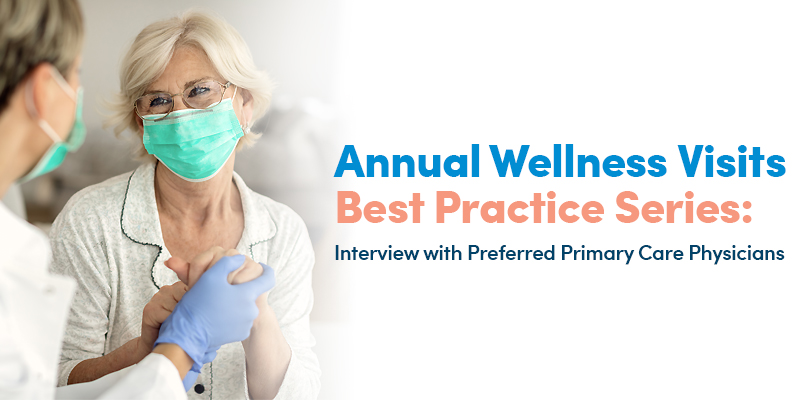

COVID-19 has led to an unprecedented year for everyone, especially providers as they evolved with the challenges brought about by the pandemic while still ensuring their patients received the care they needed.
One such challenge has been how to continue performing Annual Wellness Visits (AWVs) safely in order to leverage its extremely beneficial opportunities to focus attention on implementing and tracking health maintenance services for the patient.
In this series, we are highlighting the best practices of some of our providers that have optimized the AWVs even during the pandemic that your practice may want to implement as healthcare faces similar challenges going into 2021.
Preferred Primary Care Physicians (PPCP) is a provider office located in the Pittsburgh area that has done an exceptional job performing Annual Wellness Visits. They have reached an 89.3% completion rate in 2020 for the Highmark Medicare Advantage members attributed to their practice.
To understand how they achieved such an optimal rate despite the challenges, we interviewed Gregory Erhard, Chief Executive Officer, PPCP.
Q1: How do you utilize Annual Wellness Visits in your office?
A1: We have always emphasized to our patients and providers that we consider Annual Wellness Visits to be of very high value. From a population health standpoint, we use the information gathered during the Annual Wellness Visits to build out clinical programming, including our chronic care management, ambulatory pharmacy, and nutrition counseling programs.
Q2: Do you ever struggle to get patients to want to do an Annual Wellness Visit?
A2: Yes, we sometimes find it hard to bring patients in for an Annual Wellness Visit. Most of our patients expect a physical exam when they see one of our providers and the Annual Wellness Visit can be confusing for them. When this happens, we take the opportunity to educate our patients on what an Annual Wellness Visit is and why it is so important.
Q3: How do you encourage your providers to book Annual Wellness Visits?
A3: We have established AWV completion targets for each of our providers/offices to meet to help encourage them to complete more of these high value visits. We offer education and additional resources to if necessary, and we circulate monthly dashboards for providers to track progress.
We also factor Annual Wellness Visit completion rates into our value based incentives to encourage providers to meet their targets.
Our current goal for providers is a 90% completion rate for Annual Wellness Visits for our Medicare Advantage patients.
Q4: How do you encourage your patients to book Annual Wellness Visits (outside of ongoing education)?
A4: We encourage our staff to proactively seek out opportunities for Annual Wellness Visits. We review our schedules 2 weeks ahead of time and contact patients who have follow-up appointments coming up but have not had an Annual Wellness Visit. We outreach and encourage them to change the appointment over to an Annual Wellness Visit instead.
Additionally, we use Enli® care management software to produce worklists of patients who haven’t had an Annual Wellness Visit within the last year and then proactively reach out to the identified patients to schedule an Annual Wellness Visit.
One of our offices will even take two days out of the office at the beginning of the year to contact patients and schedule Annual Wellness Visits for the entire year.
Q5: How has COVID-19 impacted your ability to complete Annual Wellness Visits?
A5: Like most providers, we had to shift our focus over to more telehealth opportunities then we had previously used. We knew it was important to continue our visits, so we shifted over to 100% telehealth (audio and video appointments) within two days of the stayat-home mandate. We quickly began seeing 700 plus telehealth visits a day.
Q6: Did moving to telehealth cause any complications?
A6: While we definitely have an audience for telehealth, some of our elderly patients don’t have wifi or know how to use technology for this. To circumvent this issue, we did a few parking lot telehealth appointments to help them get the technology they needed. I was also pleasantly surprised to find that a lot of them had children who were willing to help them set up the appointments so that it could be done via telehealth.
There were a few cases where we performed house calls to help complete the Annual Wellness Visit, but it is not something we do on a routine basis.
Q7: Do you plan to continue with the services you offered during the pandemic after it is over?
A7: Yes. We will continue to perform telehealth visits for as long as they are supported by insurance. We also want to expand our house call services at some point in the future. We appreciate PPCP for sharing their excellent efforts to manage patient care during this time and hope it helps other practices as they roll out their Annual Wellness Visit strategies in 2021.
In February, we will share an interview with another practice that also overcame challenges to meet their AWV metrics in 2020.